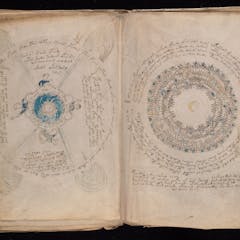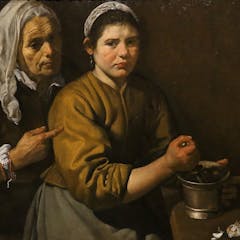
Articles on Medieval history
Displaying 1 - 20 of 98 articles

Gunpowder warfare kicked off a new era of invasive surgery and prosthetic technology in Western medicine.

Warrior-monks crusaded for Christianity throughout medieval Europe. Adding to the ongoing mystery surrounding the military order is their enigmatic seal.

Indigenous and critical race approaches to narratives of the Middle Ages help reveal more accurate histories, and combat the misuses of ‘the medieval’ for hate.

This late-medieval document is written in encoded text that has yet to be cracked. But its numerous illustrations provide clues about its content.

Medieval Europeans thought about politics in terms of leadership and often criticized rulers for ‘tyranny’ − both in government and in the church.

Medieval scholars connected celestial events to changes that happened on the ground, such as the overthrow of the king.

The Distaff Gospels is a collection of advice around pregnancy, childbirth and health. It was shared between French women while spinning flax.

Early modern societies in Latin America and Spain saw a convergence of traditional medical knowledge and the professionalization of medicine. The resulting differences in access to care endure today.

While the wider literature tells us that medieval women were silent and passive, their letters and embroideries tell a different story.

Your doctor’s MD emerged from the Dark Ages, where practicing rational “human medicine” was seen as an expression of faith and maintaining one’s health a religious duty.

Court leet records provide a vivid picture of the disagreements and disputes which pre-occupied medieval townspeople.

The medieval is part of the mosaic of modern Australia. Our nation’s heritage on this island continent is full of it: in aesthetics, institutions, laws, languages, identities, moralities.

The gaping maws and great belch of the Norse ‘hafgufa’ may well have been a humpback whale simply engaging in trap-feeding.

Much of what we know about the life of the sixth century monk, St David, comes from medieval texts written several centuries later.

The Newport medieval ship is the most complete section of a 15th-century European vessel discovered to date.

Many people gathered and slept in a shared warm space in medieval times.

Tiny drawings, such as knights riding snails, and random lines and squiggles were common in medieval books.

The idea that Europeans brought new diseases to the Americas and returned home with others has been widely accepted. But evidence is mounting that for syphilis this scenario is wrong.

The objects buried with people provide important clues about their lives.

A 12th century sighting of ball lightning has been discovered in a medieval monk’s chronicle.
